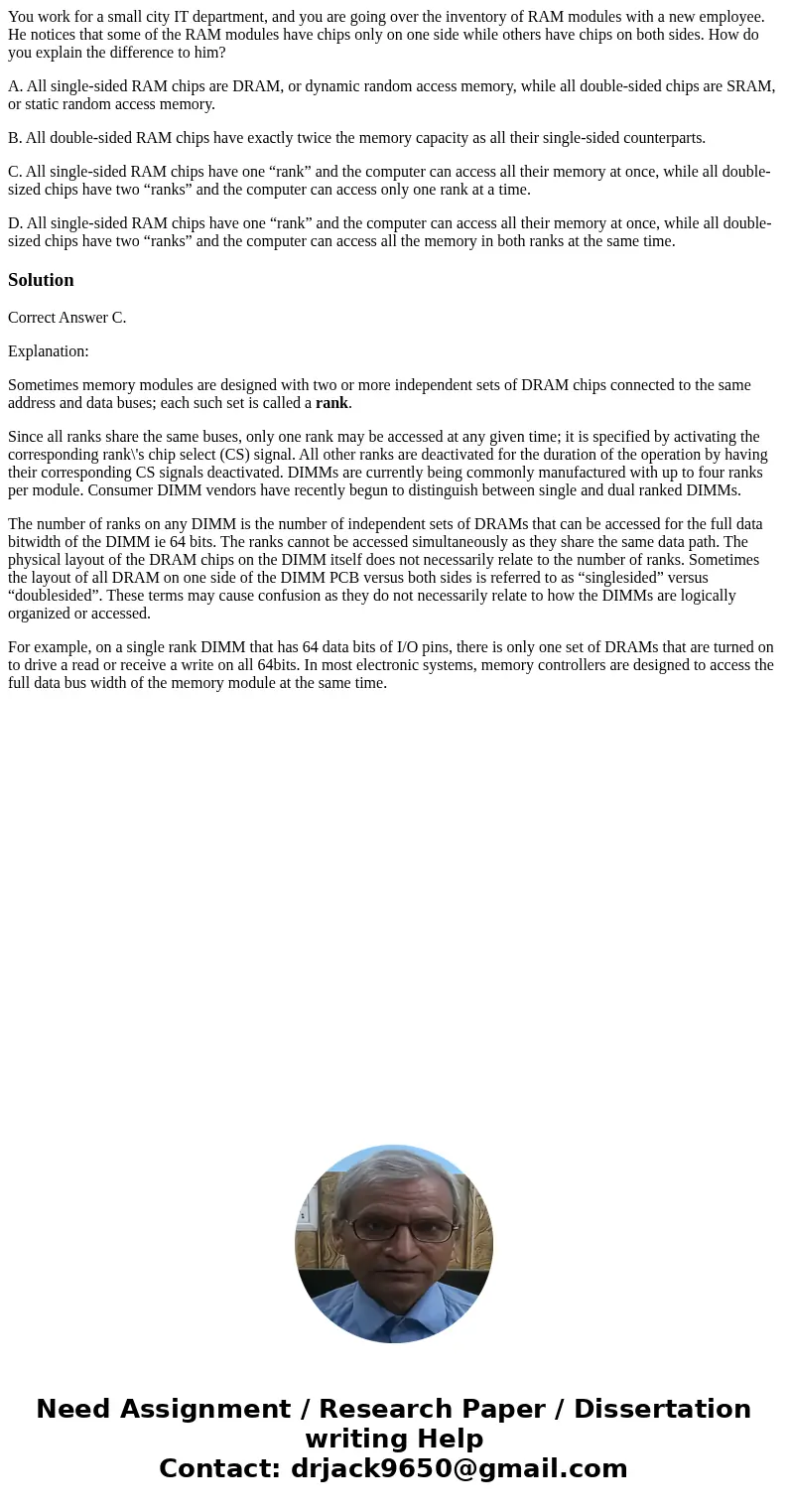You work for a small city IT department and you are going ov
You work for a small city IT department, and you are going over the inventory of RAM modules with a new employee. He notices that some of the RAM modules have chips only on one side while others have chips on both sides. How do you explain the difference to him?
A. All single-sided RAM chips are DRAM, or dynamic random access memory, while all double-sided chips are SRAM, or static random access memory.
B. All double-sided RAM chips have exactly twice the memory capacity as all their single-sided counterparts.
C. All single-sided RAM chips have one “rank” and the computer can access all their memory at once, while all double-sized chips have two “ranks” and the computer can access only one rank at a time.
D. All single-sided RAM chips have one “rank” and the computer can access all their memory at once, while all double-sized chips have two “ranks” and the computer can access all the memory in both ranks at the same time.
Solution
Correct Answer C.
Explanation:
Sometimes memory modules are designed with two or more independent sets of DRAM chips connected to the same address and data buses; each such set is called a rank.
Since all ranks share the same buses, only one rank may be accessed at any given time; it is specified by activating the corresponding rank\'s chip select (CS) signal. All other ranks are deactivated for the duration of the operation by having their corresponding CS signals deactivated. DIMMs are currently being commonly manufactured with up to four ranks per module. Consumer DIMM vendors have recently begun to distinguish between single and dual ranked DIMMs.
The number of ranks on any DIMM is the number of independent sets of DRAMs that can be accessed for the full data bitwidth of the DIMM ie 64 bits. The ranks cannot be accessed simultaneously as they share the same data path. The physical layout of the DRAM chips on the DIMM itself does not necessarily relate to the number of ranks. Sometimes the layout of all DRAM on one side of the DIMM PCB versus both sides is referred to as “singlesided” versus “doublesided”. These terms may cause confusion as they do not necessarily relate to how the DIMMs are logically organized or accessed.
For example, on a single rank DIMM that has 64 data bits of I/O pins, there is only one set of DRAMs that are turned on to drive a read or receive a write on all 64bits. In most electronic systems, memory controllers are designed to access the full data bus width of the memory module at the same time.

 Homework Sourse
Homework Sourse